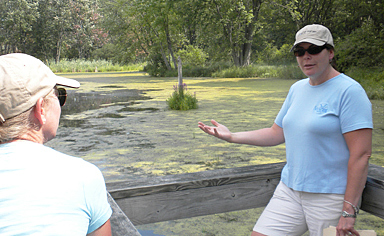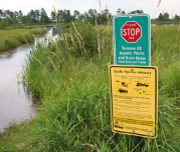The Great Lakes are particularly vulnerable to what's known as invasive species – non-native plants and
animals that threaten existing ecosystems. The Environmental Protection Agency (EPA) has been working on
developing an aquatic invasive species total prevention effort for the last five years, and Dr. Joel
Hoffman is part of that effort, developing early detection strategies. "Our vision is to have a policy in
place that would stem the arrival of invasive species," says Joel.
The Great Lakes are connected to the open ocean through the St. Lawrence Seaway, which is a huge help
to the economy but also allows for an increased threat from invaders. Invasive species have been a
major biologic and economic disturbance in the Great Lakes; the most recent news concerns Asian carp
moving from the Mississippi basin to the Great Lakes basin through the Chicago ship canal. Joel's
research aims to provide managers with a much better chance at eradicating these invaders before they
are established. He is looking at different sampling models that will reduce the effort of finding
specific species, combining traditional sampling strategies with newer genetic techniques for rapid
identification. His research is part of a larger EPA effort began in 2006 in collaboration with the US
Fish and Wildlife Service.



